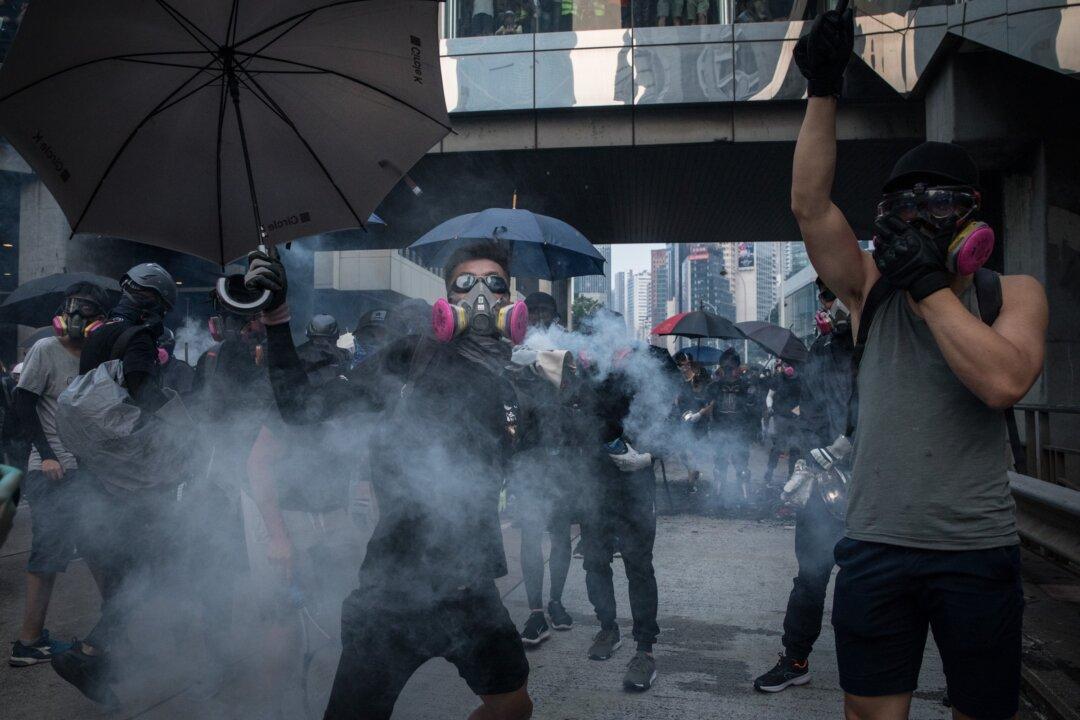The 17th consecutive weekend of protests in Hong Kong brought more violent clashes between police and protesters, as the latter commemorated the fifth-year anniversary of the pro-democracy Umbrella Movement and marched in an unauthorized demonstration in solidarity with global supporters.
Hong Kong police tried to disperse protesters by firing water cannon, tear gas, and “less lethal” weapons on Sept. 29, with at least one journalist and one protester reportedly injured in the eye by police.





